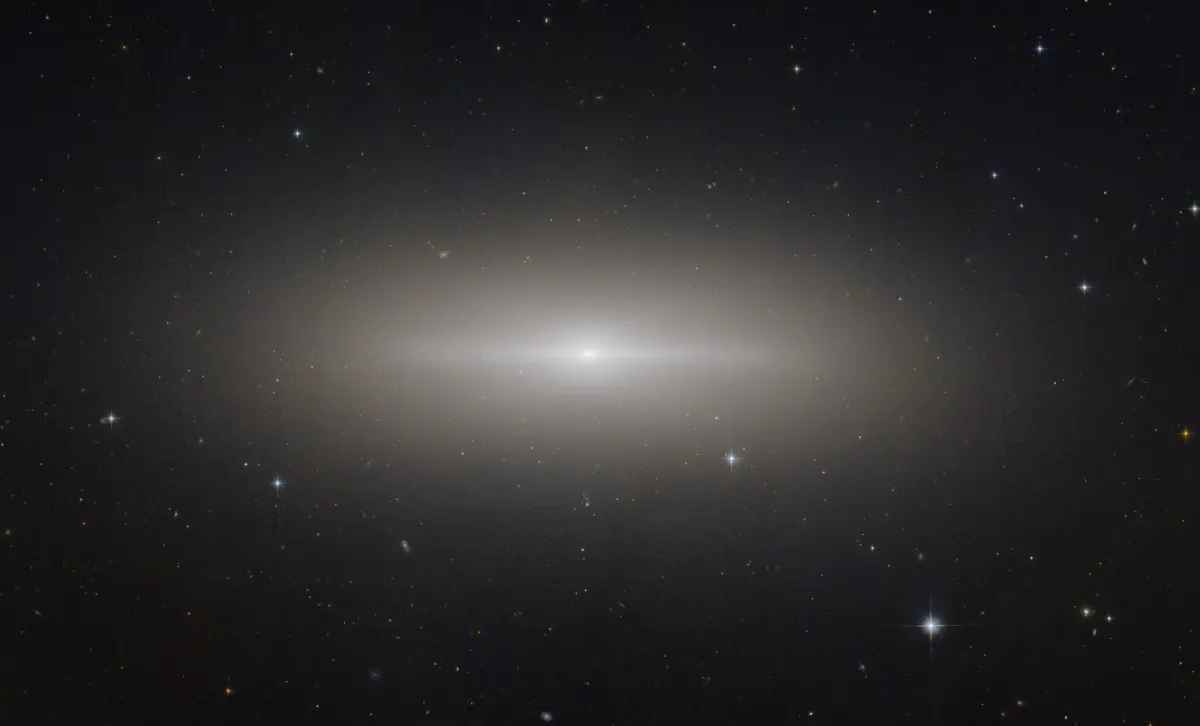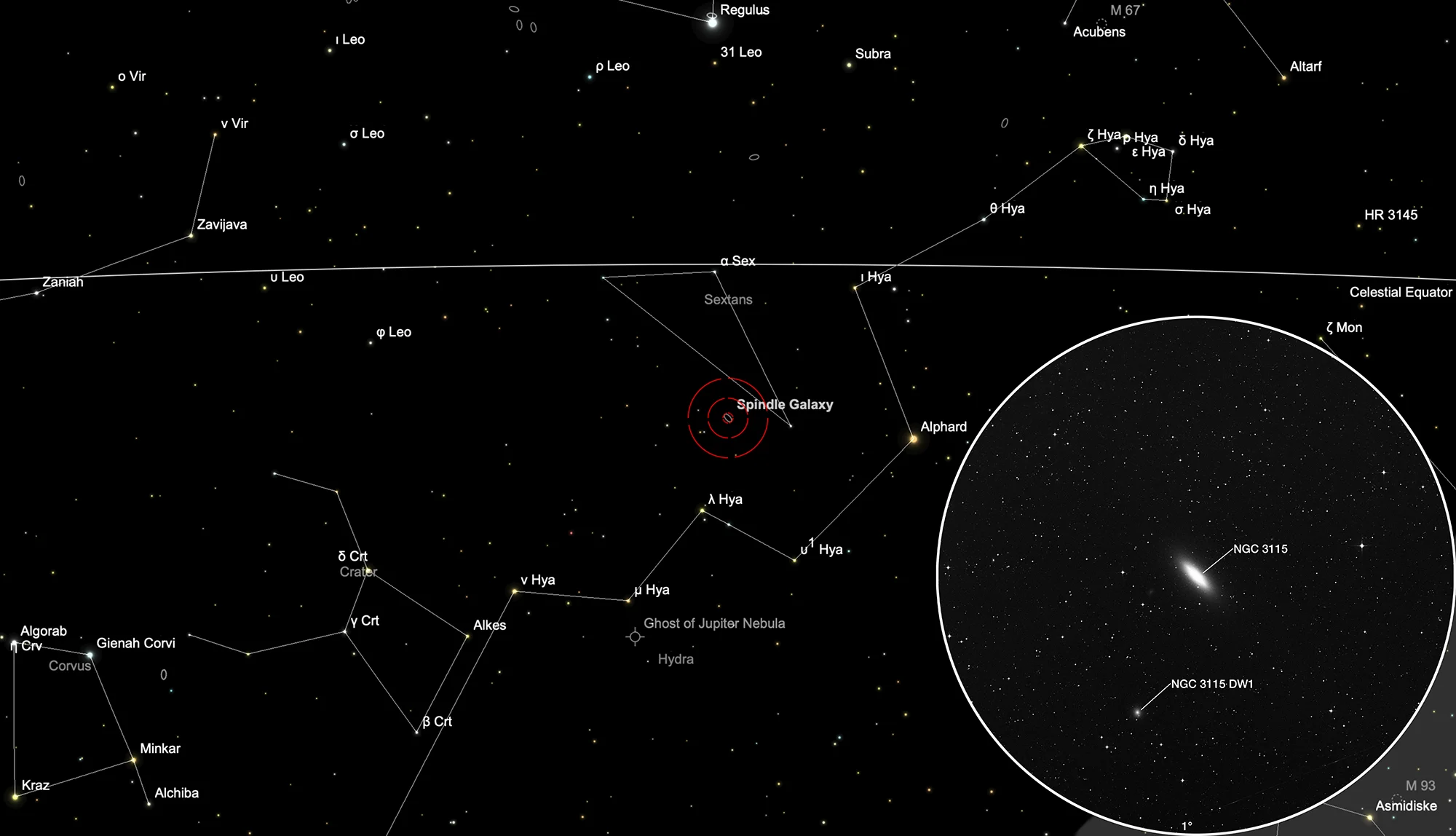Galaxy NGC 3115

History
On 22 February 1787 William Herschel discovered a «bright nebula» which he listed as I 163. He wrote: «Extremely bright, considerably large, much extended, 45° south preceding north following, having a nucleus 2' long, faint branches 5' long.» [464] John Herschel observed this nebula on 14 March 1827, listed it as h 668 (later h 3223 in his «Cape Catalogue») and wrote: «Very bright, large, much extended, very suddenly much brighter in the middle; almost to a nucleus 3' long, 30" broad. With 12 inches aperture, its nucleus is rather speckled; with 6 inches it is barely discernible as a nebula.» [466]
Lord Rosse observed the nebula on 11 March 1848 using his 72-inch telescope and noted: «Fine ray, with very bright nucleus.» [486]
NGC 3115 is sometimes also called «Spindle Galaxy». But this name is rather used for Messier 102.
Physical Properties
NGC 3115 is a lenticular galaxy that we see edge-on. It lacks spiral arms but boasts a galactic bulge and prominent disk. It hosts an elderly stellar population and has used up nearly all of its star-forming material. It is located about 32 million light-years away. In the centre is a supermassive black hole with the mass of roughly one billion (109) times the mass of our Sun. [261]
| Designation | NGC 3115 |
| Type | Gx (E-S0) |
| Right Ascension (J2000.0) | 10h 05m 14.1s |
| Declination (J2000.0) | -07° 43' 05" |
| Diameter | 7.2 × 2.4 arcmin |
| Photographic (blue) magnitude | 9.9 mag |
| Visual magnitude | 8.9 mag |
| Surface brightness | 11.9 mag·arcmin-2 |
| Position Angle | 40° |
| Redshift (z) | 0.002212 |
| Distance derived from z | 9.34 Mpc |
| Metric Distance | 10.070 Mpc |
| Dreyer Description | vB, L, vmE 46°, vgsmbMEN |
| Identification, Remarks | WH I 163; h 668=3223; GC 2008; MCG -1-26-18; UGCA 199; Spindle galaxy |
Finder Chart
The galaxy NGC 3115 is located in the constellation Sextans. It can best be observed from October to July.
Visual Observation
762 mm Aperture: The spindle galaxy NGC 3115 has an almost uniform spindle shape, one side of which appears to be bordered by a slightly straight dark band. — 30" f/3.3 SlipStream Dobsonian, Hasliberg, 05. 03. 2025, SQM-L 21.62, Eduard von Bergen
